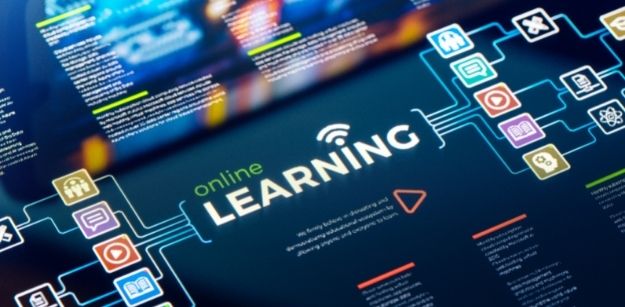If this pandemic has taught us one thing, it is that online learning may just be the future of education. What would have been unthinkable just a year ago, ended up being the only choice for educators the world over as everyone went into lockdown for well over a year. As schools were left with no other option, they had to resort to online teaching, where live classes and recordings became the norm.


This led people to ask the question – are textbooks and physical school settings on the way to becoming obsolete? Could online education be the norm in the future?
Perhaps better still, is online education going to be the ‘great equaliser’ of the decade, allowing people to access information and knowledge that would otherwise have been unthinkable to attain?
To begin with, while there were already several online courses available at college and degree level for students, online education for schools, including online tuition, is a new phenomenon. So, what are the advantages offered by online education at a school level?
1. Flexibility
Going to school has always been associated with a chaotic environment preceding it – the morning hustle of getting ready, having the uniform at hand, gulfing down breakfast, and then rushing to catch the bus. All of this was a thing of the past, as students could now, from the comfort of their home, log into their computers at 9am without fretting about having a morning routine. Students that would have missed a day of school had no way of catching up to their missed lessons, besides reading on their own and doing the assigned homework but now, teachers were offering recordings of lessons, allowing those that missed them to catch up, while also allowing students to revisit classes to better understand tricky and difficult concepts. These flexibility options extended not just to students, but also to teachers. Now, teachers had to make lesson plans for students at their own pace, and had to log in and teach only when they had a class, rather than be in the physical space of the school all day long. Thus, thanks to online education, the option of flexibility was extended to both students and teachers.
2. Efficacy and Efficiency
Along with flexibility, a major advantage of online education is also efficiency. Rather than relying on only textbooks and self-made power points, due to screen sharing and live presenting, there were endless possibilities to help children understand complicated concepts easily. This included incorporating videos, guest talks, online quizzes, breakout rooms for discussions, games, using educational apps, etc. This made teaching not only more impactful but also more effective. Due to the ease of using more audio-visual tools than usual, it also increased the efficiency of teachers, allowing them to really drill down into concepts in a way that would have been impossible in a physical classroom setting.
3. Better Student Participation
If students have the equipment to begin with, then online learning encourages not only better attendance of students in the class, but also allows for better participation by students. While most students might be too shy to present in front of the entire classroom, breakout rooms allowed students to speak in smaller groups. Even using the chat function allowed students to ask questions that they would otherwise have not asked physically in the classroom. Thus overall, online education opportunities gave several students the confidence they needed to come forward and present ideas and speak in groups; something that had never happened before, as noted by several teachers.
4. Works for All Ages and All Students
Most students have a specific style of learning; some learn by reading, some by listening, and some by watching and repetition. The best aspect of online learning was that this gave an opportunity to all kinds of students to learn in the style that best suited them. By using audio-visual tools, and even giving recordings of lessons, students were given the opportunity to not only learn and understand concepts at their own pace, but also in the style that best suited them and their style of learning.
5. Cost Effective
While most people might claim that online education is cheaper, and overall it surely is, there are certainly starting costs involved that cannot simply be glossed over. High speed internet, coupled with a device such as a desktop, or laptop, or a tablet is a necessity for online education to work. Unfortunately, in a household with two working individuals and two school going children, four distinct devices for four people to use simultaneously may have been a challenge for many. However, once these costs were overcome, there were several financial benefits that came into play. These included cutting down of travel costs, eating at a canteen or paying for a tiffin service, buying new school supplies including stationery and uniforms, etc. Thus, as the lockdown and pandemic has stretched to more than year, the monthly costs involved with going to school dramatically helped pay off the cost of affording online education at home.
As online education gathers steam, it doesn’t mean that it doesn’t come with its own set of problems and challenges. As schools moved to online learning, the huge disparities between the rich and the poor came sharply into focus. Those that lacked access to high-speed Internet, or laptops and tablets were left behind, and had little scope to catch up or make up for lost lessons. Even children in urban settings, due to the fickle nature of technology and bandwidth, risked losing out on classes and lessons on a given day, despite being present. Furthermore, children being children, need physical play and contact, and staring at a screen may become tiresome and boring after a while.
Thus, for the idea of online education to truly be ‘the great equaliser’ that it’s touted to be, the money saved from costs that would go into physical investments, classrooms, travel, etc. should be put into ensuring equitable distribution of resources and facilities so that all children can benefit from this initiative, and no child is left behind.



